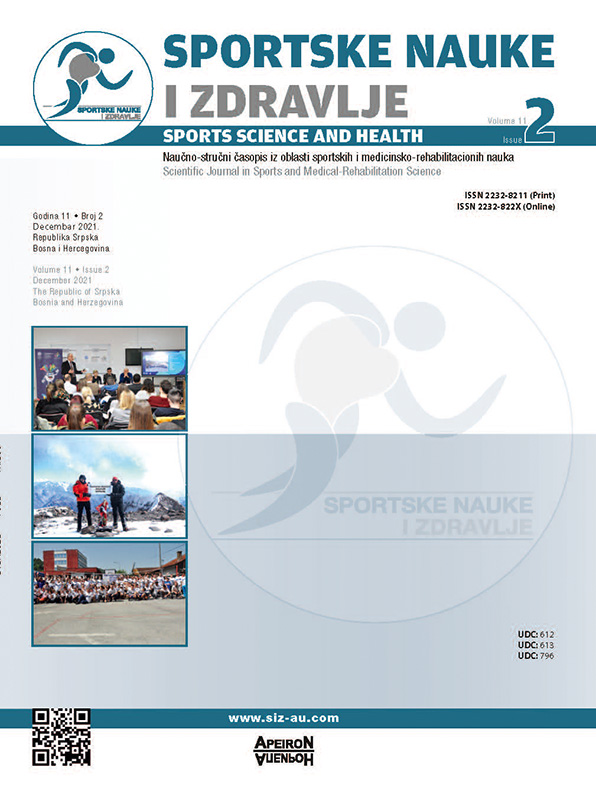Body Adiposity is Associated With a Risk of High Blood Pressure in Macedonian Children
DOI:
https://doi.org/10.7251/SSH2102125SAbstract
The goal of this study was to determine the relationship between waist circumference (WC), body mass index (BMI), body fat percentage (BFP), waist-to-height ratio (WHtR), adiposity index (API) and high blood pressure (HBP) and to determine which anthropometric parameters can best predict HBP in Macedonian children from 6 to 10 years of age. The research was conducted on a sample of 1228 boys and girls from 6 to 10 years of age. Blood pressure was measured three times in an interval of 60 seconds, and the mean value of the three measurements was used as a result for processing. Logistic regression analysis was used to assess the associations and to calculate odds ratios. Adjusted odds ratios in the highest quartiles of WC, BMI, BFP and WHtR were statistically significant in boys (girls): hypertension – 5.19 (6.38), 3.16 (3.76), 4.39 (4.48), and 3.95 (4.84). In Macedonian children from 6 to 10 years of age, the anthropometric indices - WC and API (particularly WC) - showed stronger associations with HBP and were better at predicting HBP, compared to the other applied anthropometric indices.
